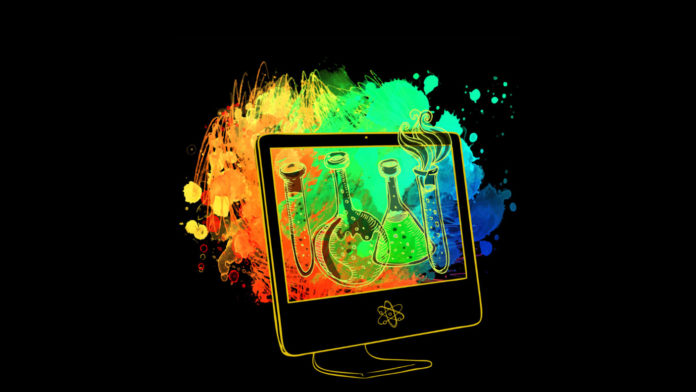California wild fires, melting arctic ice caps, and record setting temperatures suggest our climate is dramatically changing with potentially catastrophic outcomes for our species. Add to that an increase in the threat of infectious disease, disruptions to our planet’s food production, and water scarcity some warn could lead to armed conflict in the future.
We face many very real problems, and science and technology can contribute very real solutions. But according to Michael Bodekaer, a Danish education professional and entrepreneur, there’s not nearly enough trained scientists to address these dangers.
In a recent conversation with Singularity Hub, Bodekaer pointed out that in the US alone, almost 60% of students in STEM fields drop out of their studies (a claim supported by government-reported attrition rates).
“We are on a mission to help solve global challenges by educating more scientists—and we need more scientists if we are to solve the complex challenges the world is now facing,” he told me.
To do that, he’s co-founded Labster, a Danish company that develops virtual reality science laboratories that offer users virtualized lab equipment in a software simulation.
“Think of Labster as like a flight simulator that trains pilots, only we train scientists in a laboratory,” Bodekaer says. In Labster, users can use pipettes to conduct biology experiments, access PCR machines to manipulate DNA, use gene sequencers and electron microscopes, access training and education video tutorials, and use several types of science lab.
Lab training is a scarce resource in the physical world. According to Bodekaer, even a top university, which can afford expensive equipment, can only provide limited access to the various groups of students who might require it. Many schools can’t afford a lab at all. Labster aims to address these cost and accessibility issues by making the machinery virtual and by simulating various science experiments as a series of stored mathematical equations.
“There is a huge amount of research that simulates real-world chemical and biological reactions using math equations. What we do is take those equations and store them in our simulation engine. Based on these equations, we can simulate what would happen in the real world if you conducted these experiments,” he says.
It’s true that no Labster student will ever discover a novel or breakthrough approach to science, given these simulations rely on a fixed set of rules and equations. But students can learn to run incredibly complex experiments and save time by testing their hypotheses before moving research into the real world.
“A good example of this is our fermentation simulator, where you can change several parameters like temperature, airflow, PH/acidity, and really adjust the things that affect cell growth. Students can receive billions of different outcomes as a result of a mix of the different input parameters,” he pointed out.
Evidence suggests that learning in virtual training environments like these may be more effective than traditional methods of learning.
When a group of learning psychologists at Stanford and Technical University of Denmark measured the effectiveness of Labster, they saw a 76% increase in students’ scores who used Labster in place of traditional teaching methods. Even more impressive, scores jumped 101% for students who combined virtual learning with teacher-led coaching and mentoring.
Virtual reality also provides other added benefits beyond learning effectiveness.
“Because the pace of innovation in science and engineering is happening so fast, many universities cannot keep up to buy the latest machinery and equipment that is needed. In VR, they can access these machines with a software update,” Bodekaer said.
Additionally, Labster allows students a risk-free way to experiment with highly controlled substances. Salmonella, for example, is a dangerous bacteria that requires high levels of security clearance, something most universities don’t have.
Today, over 90% of Labster users access the simulators on an internet browser, but as VR headsets are becoming rapidly cheaper, Bodekaer has noticed a shift to immersive virtual reality. This year, several companies will be releasing standalone VR headsets that will cost less than $200, including Facebook’s Oculus Go. The Labster simulations available in the browser experience also work in VR headsets. Bodekaer hopes cheaper VR will mean more access for students around the world next year.
“We want to bring Labster to millions of students all over the world, even the most remote parts of Africa. With the launch of these $200 headsets—and eventually one day they will be essentially free—that means a child living there can install Labster and have access to an experience that would cost millions of dollars in the real world.”
Half a century ago, computer science students faced similar challenges with lab costs and accessibility. Only those who attended a well-funded university with a dedicated computer lab could learn to use the machines. In the past 50 years, Moore’s Law made a world in which almost half of all humans now carry a smartphone—an exponentially more powerful computer than any university had 50 years ago—in their pocket.
Following on that personal computing revolution, software is now digitizing much of the world and providing access to tools and resources never before available to many. With concepts like Labster, and other virtual reality projects, now even a science laboratory with the latest tech and machinery—something only the wealthiest and best-funded companies and universities currently have access to—will soon be available in your pocket.
Image Credit: Gorbash Varvara / Shutterstock.com



